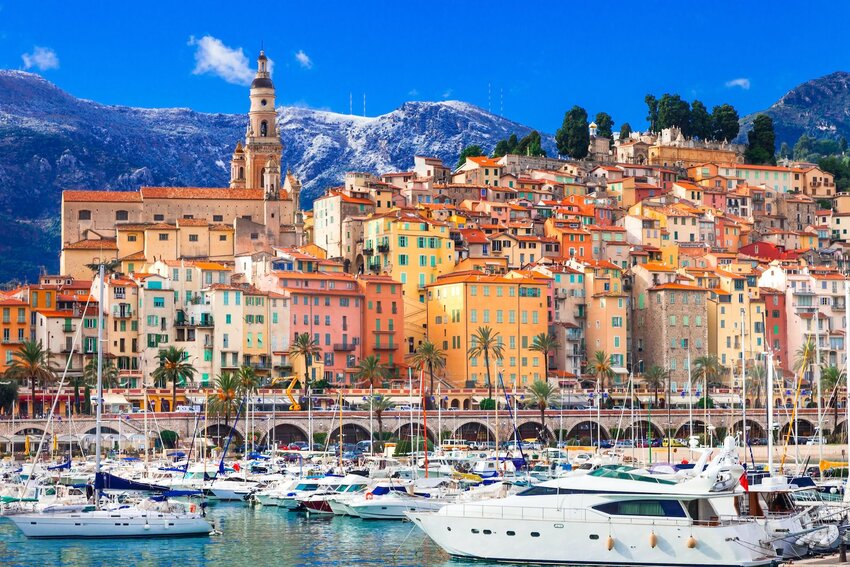In October 1920, the great English crime novelist Agatha Christie published her first novel in the U.S. She called the story The Mysterious Affair at Styles and it retailed for $2. Christie set it in the fictitious village of Styles St. Mary in Essex, but she took inspiration for the setting from places in the West Country. That’s no surprise: she was born in Torquay, and later purchased a holiday home overlooking the River Dart, Greenway House, which is now open to visitors as a National Trust property. The area would feature in many more of her works.

Like many authors, Agatha Christie wrote about what she knew, and many of the location descriptions in her novels reflect first-hand experience in real life places. While Miss Marple largely sticks to England, Belgian detective Hercule Poirot travels to more exotic destinations in pursuit of the truth. To mark the 100 year anniversary of that first publication, here are some quintessentially Christie locations. Travel vicariously through her novels for now, and bookmark your favorites for future trips.
The South of France

Old school glamour is at the heart of Christie’s 1928 book, The Mystery of the Blue Train. Detective Poirot boards Le Train Bleu in Paris to head south to the Riviera. Then as now, pretty towns like St. Tropez and Menton attracted the moneyed set. During this journey, however, someone strangles an American heiress and steals a valuable ruby; it’s up to Poirot to solve the mystery. These days, the French Riviera retains its appeal amongst the glitterati.
Though there’s no overnight train from the capital to the Riviera – the high speed TGV put an end to that – it’s still possible to reach Menton by rail. To glitz up your trip, dine at the sumptuously ornate restaurant Le Train Bleu before you depart Paris’s Gare de Lyon station and let your imagination do the rest.
The Nile, Egypt

Death on the Nile is one of Christie’s most successful novels, and has been adapted for television and the big screen countless times. Poirot is back, this time in the Egyptian capital Cairo. There, he boards a boat to take a leisurely Nile cruise and finishes up investigating a trio of murders. In the 19th century, travel pioneer Thomas Cook introduced steamer trips that cut such a trip from several months to less than three weeks.
Ever since, tourists have snapped up berths in droves, keen to enjoy a hassle-free transit along the world’s longest river, with stops to explore the Valley of the Kings, Abu Simbel and other ancient sights. Christie, however, saw the merits in staying on dry land, and wrote the novel from the comfort of The Old Cataract Hotel in Aswan. Built in 1899, it stands proudly on the east bank of the Nile overlooking Elephantine Island. The timeless scene of palm trees and white-sailed feluccas that greets today’s travellers is unchanged from Christie’s days.
Istanbul, Turkey

Murder on the Orient Express is another enduring favorite with filmmakers. The irrepressible Poirot arrives in Istanbul from Aleppo in Syria, securing a ticket for the world’s most exclusive train to get him home to London. During the night, he hears suspicious noises not far from his compartment. Poirot steps in to solve the case of a grisly murder while the train is halted in the snowy Yugoslav countryside to wait for the police to arrive.
Christie knew the luxury train first-hand. In 1926, she found out her husband Archie had been having an affair, a discovery which led to their divorce. To heal her broken heart, she travelled east on the Orient Express, ending up in Baghdad, Iraq. It was there that she developed a passion for archaeology – and for the man who would become her second husband.
The Swiss Alps

The Belgian detective winds up in Switzerland for a couple of instalments of the short story series The Labors of Hercules. In The Arcadian Deer, he follows a lead in the hunt for a missing ballet dancer that takes him to the fictitious resort of Vagray Les Alpes; in its sequel The Erymanthian Boar, he’s been sightseeing in Chamonix, Montreux and Andermatt, which definitely do exist in real life. Later in the story, Poirot travels to Avines, Caurouchet and Rochers Neiges.
None of these places exist outside of the writer’s imagination, though the similarly named Rochers-de-Naye does. It can be reached via the cog railway from Montreux. Some of the most breathtaking panoramic views in Switzerland, of Lake Geneva and the Alps, await those who make the ascent.
The Caribbean

This time it’s Miss Marple who winds up abroad. After a bout of illness, her nephew treats her to a holiday on the fictional Caribbean island of St. Honoré. In the novel A Caribbean Mystery, the elderly protagonist stays at the Golden Palm Resort and learns of a man who got away from murder as she strikes up a conversation with a fellow tourist, Major Palgrave. When he’s murdered, it’s up to Miss Marple to solve the mystery herself.
St Honoré doesn’t exist in real life, but Agatha Christie did travel to Barbados in 1956, staying at the luxurious Coral Reef Club on the island’s west coast. It’s thought to have provided the inspiration for the location of A Caribbean Mystery; in 1989, a BBC dramatization filmed there, cementing the connection.





